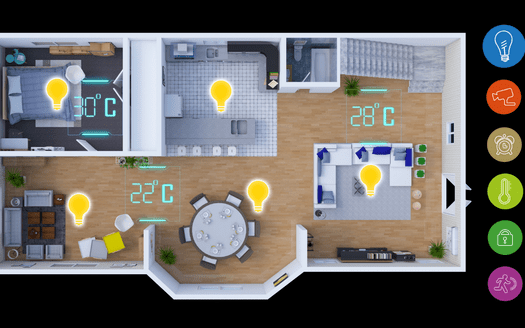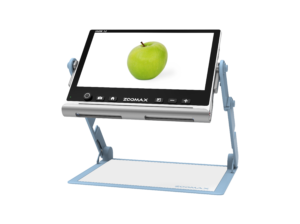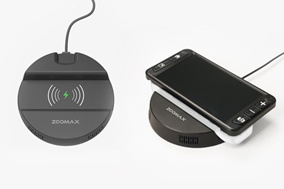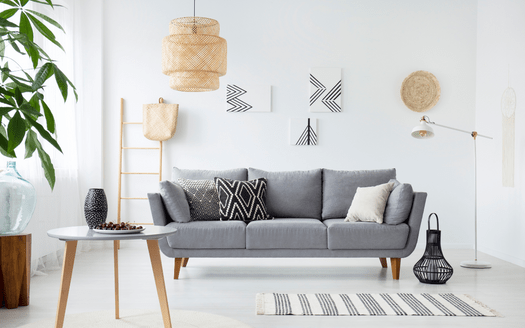
Are you living with the visually impaired? If so, don’t let vision loss hinder independence at home. In this blog, we put together six practical ways to improve accessibility in your house. These thorough tips and ideas will enhance the safety, comfort, and independence for individuals with poor vision at home. Read on to discover how you can modify your living space and make home space more accessible today!
Why Making Home Accessible for People with Low Vision
Ensuring that our homes are accessible for people with poor vision is not only an issue of safety and convenience but also a matter of inclusivity. On the one hand, navigating around the home can be challenging and potentially hazardous for the visually impaired or legally blind. By implementing some modifications such as improving lighting and color contrast, installing handrails and grab bars, and organizing the home in a logical and clutter-free manner, we can considerably enhance the safety and independence for them. On the other hand, making our homes more accessible to the low-vision population also sends a meaningful message of inclusivity and empathy. As active members in the community, we care about the needs of visually impaired people and are committed to creating a welcoming environment for them. Let’s take the necessary steps to make our homes more accessible for those who are blind or visually impaired, and make a positive impact on their lives.
1. Enough Lighting for Most-Used Areas at Home

Adequate lighting is essential for individuals with low vision to be able to see and navigate their surroundings safely. It’s important to ensure that all areas of the home are well-lit, with a special emphasis on areas like hallways, stairwells, and restrooms that are frequently used. In addition to the amount of light, the placement of lighting is also crucial. Avoiding placing light sources directly in the line of sight is important because doing so might cause glare and make it harder for people with impaired vision to see. Alternatively, it’s better to put the light sources above or below eye level or use lamps with shades to focus light where it is needed.
2. Add High Contrast Color
Color contrast, or the difference in color between two surfaces, is a crucial element in increasing the accessibility of a home for those with impaired vision. By leveraging color contrast, we can create visual cues that make it easier for people with limited vision to recognize and navigate their surroundings.
It’s important to choose colors with high contrast, such as black and white, or blue and yellow, which create a clear distinction for individuals with low vision to distinguish between different objects or areas. Making sure there is enough contrast between the walls, floors, and furniture is equally important. For instance, you can use brightly colored tape or stickers on the edges of steps or furniture, or add contrasting trim to doors and windows to create a clear visual distinction between them and the surrounding walls.
3. Using Large Print Materials

Large print is particularly helpful for low-vision people when it comes to reading books, labels, and signage. It can also be utilized to increase the visibility of important safety information, such as emergency exit signs and warning labels. There are two ways of incorporating large print materials into the home: first, purchasing and using large-print reading materials — many libraries and online retailers offer large print versions of books, and magazines for low-vision people. Additionally, many household products now offer large print labeling, including medication bottles and food packaging. Second, using large print signage in the home, which involves utilizing large print text to label household things like drawers and cupboards or large print numbers on thermostats and appliances. Those who are blind or partially sighted can identify and access necessary items and gadgets more easily.
You can also find more useful tips in How To Prepare Your Home After A Visual Impairment Diagnosi
4. Smart Home Technology

Smart home technology is another effective way to improve accessibility for those with low vision in the house. Smart home technology refers to devices and systems that can be controlled or monitored through a smartphone or other digital device. With the use of smart home technologies, people with impaired eyesight can better control various aspects of their home environment, including lighting, temperature, and security.
Smart lighting system is one example of smart home technology, which can be programmed to turn on and off at specific times, or in response to certain triggers, such as motion or voice commands. Some smart lighting systems offer adjustable brightness and color temperature, allowing individuals with low vision to customize their lighting to suit their specific needs. Another example is smart thermostats, which can be controlled by a smartphone or other digital device, enabling those with limited vision to effortlessly adjust the temperature in their homes without having to physically interact with the thermostat or operating it according to complex instructions.
Anyone interested in smart home technology can read this article: IoT: Building A Smart Home For The Visually Impaired
5. Magnifiers for Home Use
For those with vision issues, using an electronic video magnifier can significantly improve their ability to read, write, and perform daily tasks at home. However, it’s crucial to choose the appropriate magnifier for your special needs in the house; in short, portability and ease of use are two elements that should be taken into account.

Handheld and desktop electronic magnifiers are two major types for household use: handheld electronic video magnifiers can be easily carried from room to room, and desktop devices are great for longer reading sessions and can be adjusted for height and angle for comfortable viewing. Low vision aids such as Zoomax Snow 12 is a portable video magnifier that can be used both as a handheld device and placed on a desktop stand for added stability for people with sight decline. It also has a built-in LED light for reading in low-light conditions and can save and recall preferred settings for easy use.

Another handheld device, Zoomax Luna 6 is not only handy for taking notes and reading labels, but its unique wireless charger also makes great convenience for persons with limited vision to charge their devices at home.
6. Choosing the Right Flooring

Making the correct flooring choices can also significantly improve the home’s accessibility and security for people with limited eyesight. Factors such as slip resistance, texture, and color contrast should all be considered while choosing the floor. For example, using light flooring with dark furniture or dark flooring with light furniture can generate a strong visual contrast that can help individuals with low vision to more easily navigate around the home. Meanwhile, the risk of falls and slips can be significantly decreased by choosing flooring materials with a textured surface, like carpet or textured tile. Conversely, smooth flooring materials such as tile or hardwood can be slippery and hazardous for individuals with low vision, especially when wet.

If you or someone you care about has low vision, bear in mind that even small modifications can make a big difference. Also, don’t be afraid to contact professionals and organizations that specialize in low-vision aids and accessibility. Every effort counts in making your home more accessible and accommodating for the visually impaired.


